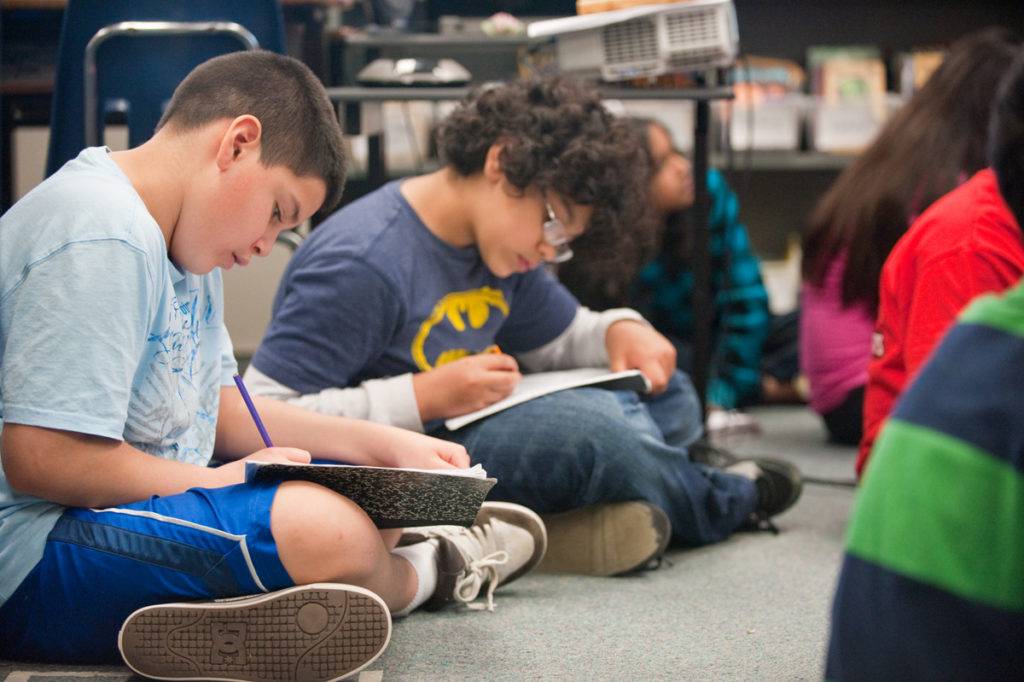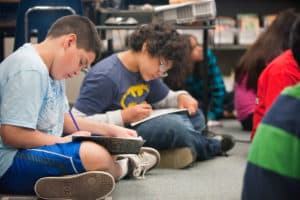
 The school year is drawing to a close. It’s been a year filled with many learning experiences for the children and for you. Though learning doesn’t end just because school does, it’s good to help children bring a sense of closure to the year of classroom learning. This article highlights the benefits of doing so and offers some suggestions that you can easily adapt for children of different ages.
The school year is drawing to a close. It’s been a year filled with many learning experiences for the children and for you. Though learning doesn’t end just because school does, it’s good to help children bring a sense of closure to the year of classroom learning. This article highlights the benefits of doing so and offers some suggestions that you can easily adapt for children of different ages.
Closure activities help wrap up the year on a positive note and provide children with many benefits:
In choosing closure activities, it’s most helpful to provide children with opportunities to reflect both as members of a learning community and as individual learners. As a first step, lead the children in brainstorming their accomplishments as a class. Doing this will reinforce their sense of how they have helped one another learn and get them started thinking about their individual learning.
In a whole-class discussion, invite the children to list all the things they achieved together—their accomplishments, events, and even mistakes that they learned from. During the discussion, capture the children’s thoughts on chart paper. You may want to sort the results into categories, such as “Words We Can Spell,” “What We Learned About,” “Books We Read,” “Favorite Things We Studied,” and “Ways We Worked Together.” These categories will be most meaningful to the children if you adapt them to reflect the class’s personality and particular milestones in social and academic growth.
After the brainstorming session, lead the children in deciding how to make the charts beautiful and how to display them. For example, children might enjoy creating artwork to illustrate accomplishments and memories. They might want to display their charts on bulletin boards, or recreate them on smaller paper and bind them into books.
Following the class brainstorming, you may wish to lead the children in one or more of the following individual activities.
Each child takes charge of a personal display area. The goal here is for everyone in the class to have a chance to display individual work he or she feels proud of. On a section of bulletin board or a space on the classroom wall, each child puts up a piece of work he or she would like to display. The children can decide as a class on the categories of displayed work and the criteria for choosing pieces. For example, they may decide to display one piece of work from the beginning of the year and one from the end—an excellent opportunity for the children to see how much they have grown.
Besides displaying their work, children may also share with their class verbally or in writing the learning represented by their display piece. Songs, plays, poems, and speeches are just a few possibilities. In addition, the children can create a “Class Museum of Proud Work” for sharing with parents on a special night. The important thing is letting the children decide, within boundaries, what they will display and how, so that they’ll feel a sense of ownership of the celebration.
Children make personal “Reflections and Memories” books. First, devise a few questions to guide children’s reflecting—for example, “What am I proud of having done in school this year?”, “What did I learn in reading?”, or “What were some things I enjoyed doing with my friends?” (Other possibilities are shown in the charts at the end of this article.) With your guidance, a class of older children might develop these questions collaboratively.
So that the children can best share their sense of accomplishment with one another, it’s important that everyone answer the same question or questions—for example, everyone does “Things I Remember,” “What I Learned in Reading, Math, and Writing,” and “My Hopes for Next Year.” If they wish, children may choose additional questions to answer on their own.
Now the children are ready to work individually. Each child thinks about the questions, completes the reflection sheets, and assembles the sheets into a book.
Children share “Reflections and Memories” books. Children can read their completed books aloud to the class or place them in the classroom library. These books are typically favorite choices during free reading time, giving children further opportunities to reflect on their own successes and those of their classmates.
The class creates games based on their year’s learnings. Children can use information from their class brainstorming session or their individual “Reflections and Memories” books to create games or riddles that might be used during Morning Meeting. For example, in a ball toss greeting, as each child catches the ball, he or she names a book the class read together, or a word the class studied in spelling.
The class creates an “Information Book” for next year’s students. A book of “Tips for First Grade” or “Things You’ll Learn in Fourth Grade” helps students reflect on their year’s learning while being of genuine service to younger children. The class can brainstorm ideas for the book together. New first graders might want to know details such as what to do when they need to go to the bathroom or if they’re hungry before lunch time. Incoming fourth graders might be interested in what kinds of books they’ll be reading and what fourth-grade field trips are like.
Once the class chooses the topics, children can work individually or in groups to create the pages of the class Information Book.
The teacher writes an end-of-the-year note to each child. Personally recognizing, affirming, and celebrating a child’s successes is a wonderfully positive way to end the school year. By expressing your trust and belief in your students as learners, you help motivate and excite each child about the next year’s learning.
These notes needn’t be long. What’s important is to be and to focus on a particular strength the child has shown. For example, a note celebrating a child’s academic growth might look something like this:
Dear Iliana:
I saw you grow this year by using strategies to solve math problems. At the start of the year, math strategies weren’t always easy for you to understand or use. But you practiced thinking slowly and carefully and keeping your attention on your work, and you memorized math facts. Now you have lots of new strategies for learning math next year—hooray for you!
And here’s an example of a note commending a child’s social growth:
Dear Misha:
This year you really practiced caring ways to work with your classmates. At first, listening to others was hard for you. Now, you listen with care and even help classmates work out their ideas, while still sharing your own good thoughts. This skill will help you learn and keep being a good friend next year. Your new community will be lucky to have you!
We spend considerable time preparing for the beginning of the school year. This makes sense, because good beginnings set the tone for the whole year’s learning. It’s equally important, though, to spend time planning for the end of the year. Good endings leave children with feelings of pride in their learning, and that prepares them for another good beginning the following fall.
Marlynn K. Clayton has twenty years of experience as a classroom teacher in the primary grades. A co-founder of Northeast Foundation for Children, she has devoted years to helping teachers implement the Responsive Classroom approach, giving workshops, providing coaching, and writing books and articles. Marlynn is the author of Classroom Spaces That Work (NEFC 2001).